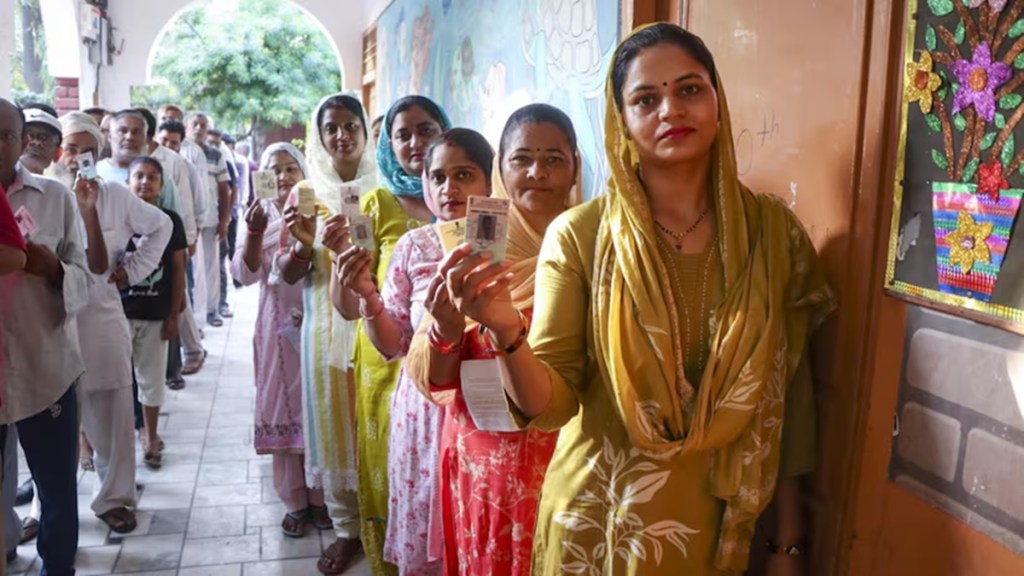The success of the Mahayuti and the JMM in Maharashtra and Jharkhand is the latest in a flood of women-centric cash schemes proving to be a trump card in state elections. Banasree Purkayastha examines why political parties are wooing women voters
Slew of women-centric cash transfer schemes
Almost all the political parties have perfected the art of wooing women with direct cash transfers. Mamata Banerjee’s Trinamool Congress was the first when it launched the Lakshmir Bhandar scheme in West Bengal in 2021, offering a monthly allowance of Rs 1,200 to women from the SC/ST community and Rs 1,000 to women from other categories. The Bharatiya Janata Party (BJP) followed suit in 2023 when Madhya Pradesh launched the Rs 1,250 per month Mukhyamantri Ladli Bahan scheme. The landslide victory there led it to replicate it in Maharashtra as the Mukhya Mantri Mazhi Ladki Bahin Yojana in 2024, providing Rs 1,500 in cash transfers, with a pre-election promise to hike this to Rs 2,100 if the Mahayuti coalition was voted to power. The BJP government’s Subhadra scheme in Odisha provides Rs 10,000 in two installments annually.
Similarly, the Jharkhand Mukti Morcha (JMM)-led coalition government launched its Mukhyamantri Maiya Samman Yojana in August this year, providing Rs 1,000 every month. The Congress government in Karnataka has the Gruha Lakshmi Yojana offering Rs 2,000 every month.
How doles impact voting patterns
AN SBI research study in December 2023 had estimated that one percentage point increase in the marginalised women receiving Ladli Behna benefit in Madhya Pradesh), had increased the district-wise electoral success rate of the incumbent party by 0.36%. “Juxtaposing such into a district-wise electoral success rate, it can be said that every 1 in 8 constituency, on an average, had a favourable outcome (pro-incumbency) due to Ladli Behna / 30-35 seats in at least 8 districts,” it said. Women beneficiaries also exhibited higher spend patterns. Thus, a sum of Rs 1,000-2,000 every month can help address inequities, appealing to marginalised groups such as single mothers, widows and economically weaker sections, fostering loyalty among such women, which translates into voter support at the polling booth for the implementing political party.
Why parties target women voters
Women’s queues were far longer than those of their male counterparts in the recently concluded Assembly polls in Maharashtra and Jharkhand, as per anecdotal evidence. A report by SBI Research in May 2024 in the midst of the 2024 Lok Sabha polls had put the all-India net incremental share of female voters at 93.6 lakh, way above the 84.7 lakh increase in male voters, hinting at the cementing of women as the new “centre of gravity” for Indian politics. “There are three women centric schemes namely Ujjwala Yojana, Matru Vandana Yojana, and PM Awas Yojana which are having a significant ground level impact in rural areas which may be resulting into increased women participation,” it had said. By 2029 when the next Lok Sabha polls will be held, the number of women voters is projected to outstrip men voters. With women emerging as a major voting bloc, government largesse can be expected to become even bigger.
Fiscal implication of these schemes
Per an SBI research report, direct cash transfers to women cost 3-11% of a state’s revenue. “The total cost for eight states (Karnataka, Chhattisgarh, Maharashtra, West Bengal, Madhya Pradesh, Gujarat, Delhi and Odisha) amounts to Rs 2.11 lakh crore,” it said. Maharashtra has allocated Rs 46,000 crore (9% of its revenue receipts) for its Ladki Bahin scheme while Madhya Pradesh’s Ladli Behna bill for FY25 is Rs 18,984 crore, a 29% increase from the allocation of Rs 14,716 crore in FY 24. Neighbouring Chhattisgarh’s Mahtari Vandan Yojana, which provides married women annual assistance of Rs 12,000, costs Rs 3000 crore, 2% of its Rs 1,25,900 crore revenue receipts for FY25. Meanwhile, West Bengal’s Lakshmir Bhandar costs Rs 14,400 crore, 6% of its Rs 2,36,251 crore revenue receipts. Karnataka has allocated Rs 28,608 crore for its Gruha Lakshmi scheme, which accounts for 11% of its revenue receipts for FY25. The AAP government in Delhi, which gives Rs 1,000 per month to every woman (excluding income taxpayers, government employees or pensioners , has allocated Rs 2,000 crore to its Mukhyamantri Mahila Samman Yojana.
Skewing the labour market
There can be other fallouts also, which can have a multiplier effect on the economy in the long run. Such schemes may be implemented at the cost of sustainable livelihood programmes such as skilling and employment generation. Then there is also the issue of artificially distorting the labour market. With four months of doles in their bank accounts, it was seen that rural women who form the bulk of the cotton-pluckers in Maharashtra were reluctant to go to the fields for work. As per an Indian Express report, farmers across the state’s cotton and soyabean-growing belts of Vidarbha and Marathwada have been blaming the Ladki Bahin scheme as one of the reasons for an unprecedented labour shortage which has pushed up labour costs during the harvesting season.


